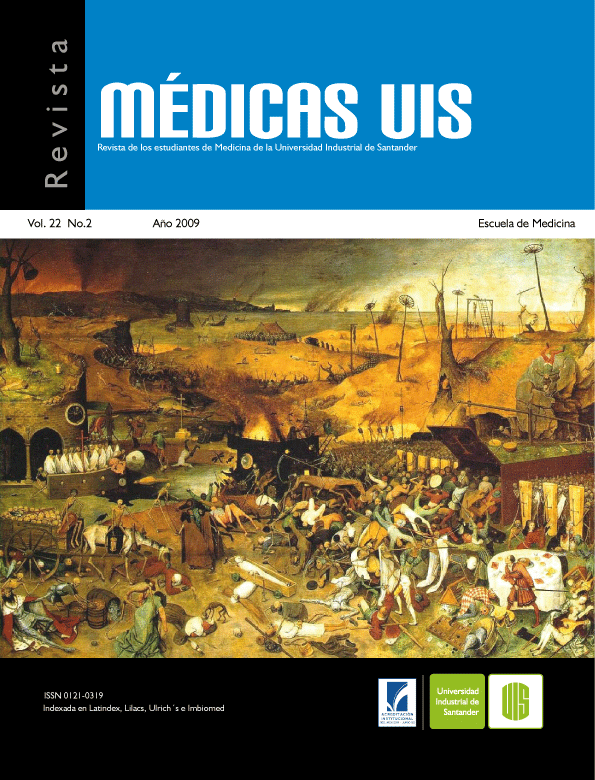Abstract
Carvedilol is a beta-blocker agent widely used in the treatment of heart failure. Many randomized controlled studies have demonstrated its effcacy, safety and even its superiority over other traditional beta-blockers such as metoprolol. However, its use in hypertension has curiously lower level and quality of scientifc evidence than in heart failure. The present review will consider pharmacokinetic, pharmacodynamic and haemodynamic aspects of traditional beta-blockers compared with carvedilol. It also analyzes the available evidence about the effects of this pharmacological group regard the impact on target organs and its effect on cardiovascular morbidity and mortality.
Key words: Hypertension. Carvedilol. Betablockers.
References
1. Frishman WH. Carvedilol. New Engl J Med 1998; 339(24):1759-1765.
2. Morgan T. Clinical pharmacokinetics and pharmacodynamics of carvedilol. Clin Pharmacokinet 1994;26:335-46.
3. Bartsch W, Sponer G, Strein K, Muller-Beckmann B, von Mollendorf E, Abshagen U. Pharmakologie und klinische pharmakologie des neuen vasodila tierenden beta-rezeptoren blockers BM 14190. Therapiewoche 1982;32:5714.
4. Dunn CJ, Lea AP, Wagstaff AJ. Carvedilol: a reappraisal of its pharmacological properties and therapeutic use in cardiovascular disorders. Drugs 1997;54:161-85.
5. Nichols AJ, Gellai M, Ruffolo RR Jr. Studies on the mechanism of arterial vasodilation produced by the novel antihypertensive agent, carvedilol. Fundam Clin Pharmacol 1991;5:25-38.
6. Louis WJ, McNeil JJ, Workman BS, Drummer OH, Conway EL. A pharmacokinetic study of carvedilol (BM 14.190) in elderly subjects: preliminary report. J Cardiovasc Pharmacol 1987;10: Suppl 11:S89-S93.
7. Neugebauer G, Akpan W, von Mollendorff E, Neubert P, Reiff K. Pharmacokinetics and disposition of carvedilol in humans. J Cardiovasc Pharmacol 1987; 10: Suppl 11:S85-S8.
8. Fujimaki M, Murakoshi Y, Hakusui H. Assay and disposition of carvedilol enantiomers in humans and monkeys: evidence of stereoselective presystemic metabolism. J Pharm Sci 1990;79:568-72.
9. Fujimaki M. Oxidation of the R(+)- and S(¡)-carvedilol by rat liver microsomes: evidence for stereoselective oxidation and characterization of the cytochrome P450 isozymes involved. Drug Metab Dispos 1994;22:700-8.
10. Neugebauer G, Gabor M, Reiff K. Pharmacokinetics and bioavailability of carvedilol in patients with liver cirrhosis. Drugs 1988;36:Suppl6:148-54.
11. Kramer BK, Ress KM, Erley CM, Risler T. Pharmacokinetic and blood pressure effects of carvedilol in patients with chronic renal failure. Eur J Clin Pharmacol 1992;43:85-8.
12. Miki S, Masumura H, Kaifu Y, Yuasa S. Pharmacokinetics and efficacy of carvedilol in chronic hemodialysis patients with hypertension. J Cardiovasc Pharmacol 1991;18:Suppl4:S62-S68.
13. Frohlich ED, Tarazi RC, Dustan HP. Re-examination of the hemodynamics of hypertension. Am J Med Sci 1969;257:9-23.
14. Messerli FH, Sundgaard-Riise K, Ventura HO, Dunn FG, Glade LB, Frohlich ED. Essential hypertension in the elderlyhaemodynamics, intravascular volume, plasma renin activity, and circulating catecholamine levels. Lancet 1983;2:983-6.
15. Lund-Johansen P. Hemodynamic patterns of untreated hypertensive disease. In: LaraghJH, editors. Hypertension: Pathophysiology, Diagnosis, and Management (Two-Volume Set) New York: Raven Press, 1995. p. 323-42.
2. Morgan T. Clinical pharmacokinetics and pharmacodynamics of carvedilol. Clin Pharmacokinet 1994;26:335-46.
3. Bartsch W, Sponer G, Strein K, Muller-Beckmann B, von Mollendorf E, Abshagen U. Pharmakologie und klinische pharmakologie des neuen vasodila tierenden beta-rezeptoren blockers BM 14190. Therapiewoche 1982;32:5714.
4. Dunn CJ, Lea AP, Wagstaff AJ. Carvedilol: a reappraisal of its pharmacological properties and therapeutic use in cardiovascular disorders. Drugs 1997;54:161-85.
5. Nichols AJ, Gellai M, Ruffolo RR Jr. Studies on the mechanism of arterial vasodilation produced by the novel antihypertensive agent, carvedilol. Fundam Clin Pharmacol 1991;5:25-38.
6. Louis WJ, McNeil JJ, Workman BS, Drummer OH, Conway EL. A pharmacokinetic study of carvedilol (BM 14.190) in elderly subjects: preliminary report. J Cardiovasc Pharmacol 1987;10: Suppl 11:S89-S93.
7. Neugebauer G, Akpan W, von Mollendorff E, Neubert P, Reiff K. Pharmacokinetics and disposition of carvedilol in humans. J Cardiovasc Pharmacol 1987; 10: Suppl 11:S85-S8.
8. Fujimaki M, Murakoshi Y, Hakusui H. Assay and disposition of carvedilol enantiomers in humans and monkeys: evidence of stereoselective presystemic metabolism. J Pharm Sci 1990;79:568-72.
9. Fujimaki M. Oxidation of the R(+)- and S(¡)-carvedilol by rat liver microsomes: evidence for stereoselective oxidation and characterization of the cytochrome P450 isozymes involved. Drug Metab Dispos 1994;22:700-8.
10. Neugebauer G, Gabor M, Reiff K. Pharmacokinetics and bioavailability of carvedilol in patients with liver cirrhosis. Drugs 1988;36:Suppl6:148-54.
11. Kramer BK, Ress KM, Erley CM, Risler T. Pharmacokinetic and blood pressure effects of carvedilol in patients with chronic renal failure. Eur J Clin Pharmacol 1992;43:85-8.
12. Miki S, Masumura H, Kaifu Y, Yuasa S. Pharmacokinetics and efficacy of carvedilol in chronic hemodialysis patients with hypertension. J Cardiovasc Pharmacol 1991;18:Suppl4:S62-S68.
13. Frohlich ED, Tarazi RC, Dustan HP. Re-examination of the hemodynamics of hypertension. Am J Med Sci 1969;257:9-23.
14. Messerli FH, Sundgaard-Riise K, Ventura HO, Dunn FG, Glade LB, Frohlich ED. Essential hypertension in the elderlyhaemodynamics, intravascular volume, plasma renin activity, and circulating catecholamine levels. Lancet 1983;2:983-6.
15. Lund-Johansen P. Hemodynamic patterns of untreated hypertensive disease. In: LaraghJH, editors. Hypertension: Pathophysiology, Diagnosis, and Management (Two-Volume Set) New York: Raven Press, 1995. p. 323-42.
Downloads
Download data is not yet available.
